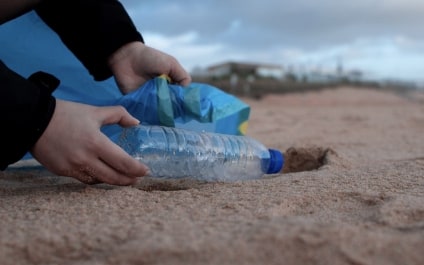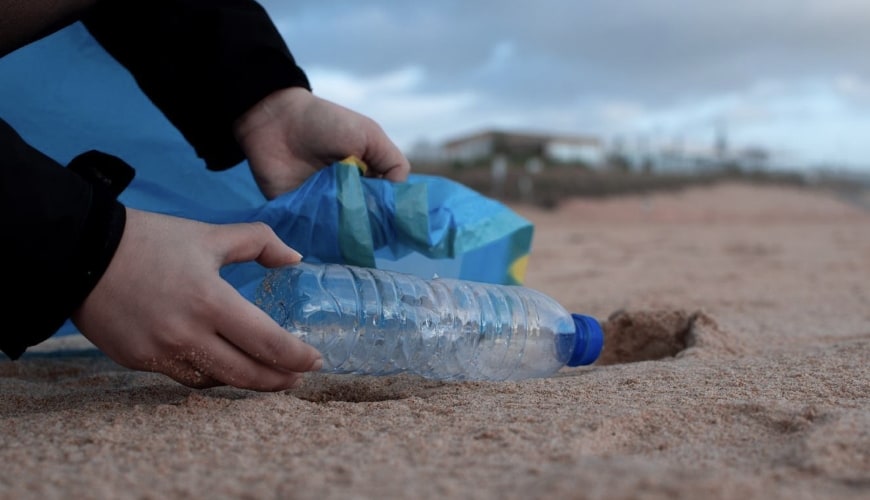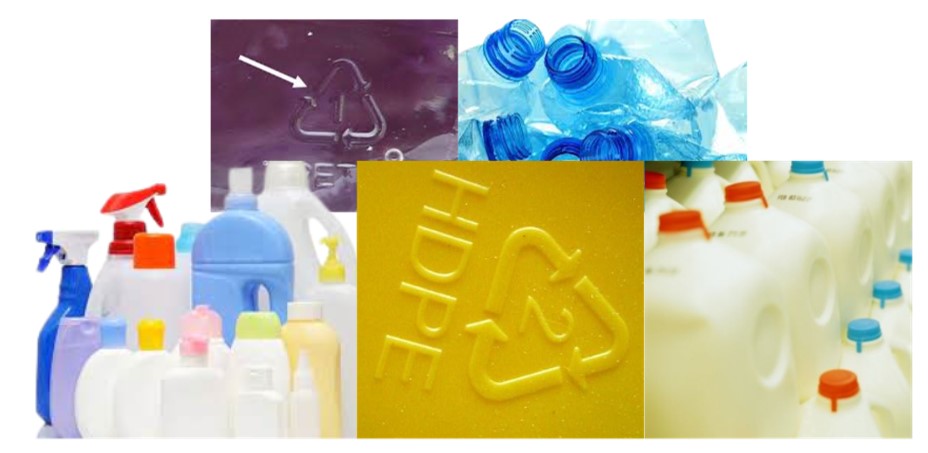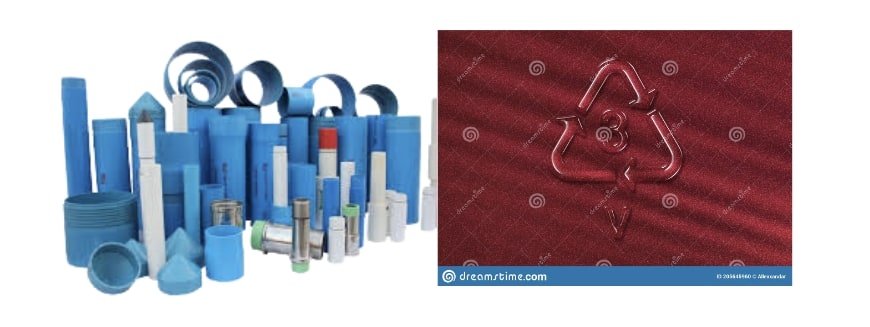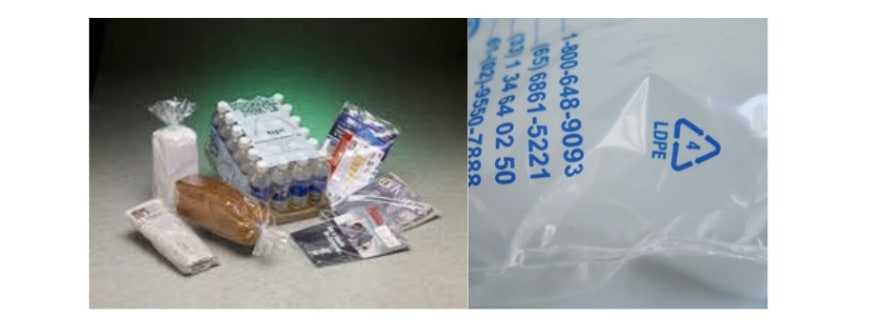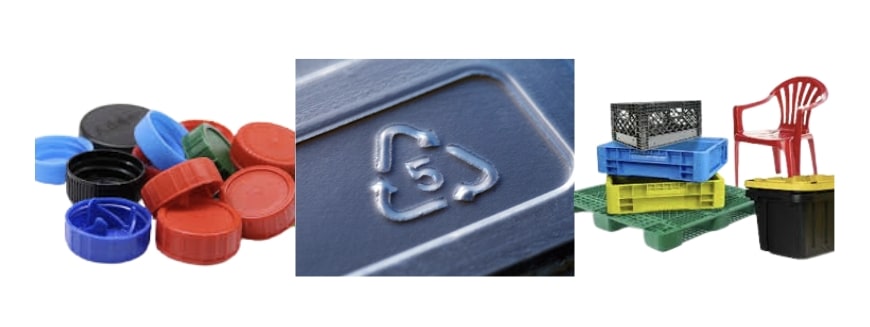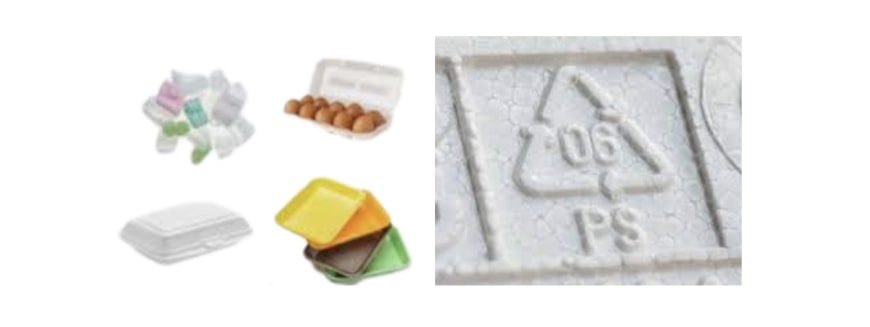Today, the mantra, “reduce, reuse, recycle,” is recognized by most people and even is part of the curriculum taught in schools to children as young as 9 and 10. In the face of an intensifying environmental crisis and increasing anxiety surrounding climate change’s acceleration, we view this being commonplace in education as a good thing. But do we really understand what we are promoting? In 2021, the U.S. rate of plastic recycling was estimated to be at about 5-6%. This disheartening statistic supports the argument that we, in fact, do not know what recycling should look like.
This can be confusing at first. You may be someone who sees every disposable item consumed through to its end in the recycling bin. But did you know that many facilities do not recycle plastic bags? Or that pizza boxes cannot be recycled? Or that most recycling plants don’t require that you toss the plastic bottle cap? There are so many misconceptions surrounding how and what to recycle. We hope that by the end of this article, you will be a little better equipped to recycle efficiently and effectively.
What materials are recyclable?
Unfortunately, not everything belongs in the recycling bin. While it would be wonderful if everything produced could see a new life, current recycling technologies do not allow everything to be repurposed at the enormous scale with which we produce waste. There are many economical roadblocks recycling plants encounter as well. Many recycling plants across the U.S. cut back on the extent of their recycling programs because the market for recycled plastics is not as profitable as that of new plastics. Instead of making money from their recycling to fund continued operations, they find it hard to break even when the cost of operations is substantially greater than any revenue they generate from the recycled products. Currently, the United States doesn’t have a federal recycling program which means there are different rules across municipalities regarding what can and cannot be recycled. Make sure that before embarking on your newly informed recycling journey, you check in on your local facility’s guidelines in addition to the tips provided below. For example, some cities have separate facilities for recycling plastic bags, whereas others do not accept them at all.
Paper
Paper is a popular recyclable, and the market for recycled paper continues to grow. Recycled paper is beginning to make up much of the packaging used in the growing online shopping culture, but paper can only be recycled 5-7 times before it is too degraded to make “new” paper. Paper items commonly accepted by most facilities include:
- Cartons and drink boxes – even though they are “polycoated,” which means that they have a plastic coating on the inside to make the product liquid resistant. Even so, these are commonly accepted and encouraged at most recycling facilities.
- Mail, envelopes, newspapers, and magazines
- Printer or copier paper, color paper is accepted at most facilities
- Paper bags
- Paper packaging like paper egg cartons, gift or shoe boxes, wrapping paper
- Softcover books
- Receipts
Always ensure paper products are clean and dry when putting them in your recycling bin. Food containers should be free of leftover foodstuffs and oils. Make sure the paper is not heavily soiled or lined with waxes. Napkins, tissue paper, and paper towels are too thin and soft to be recycled with most current recycling machinery.
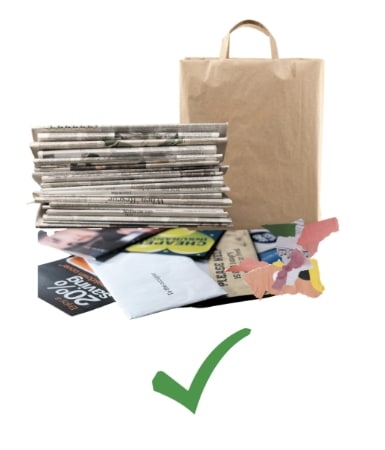
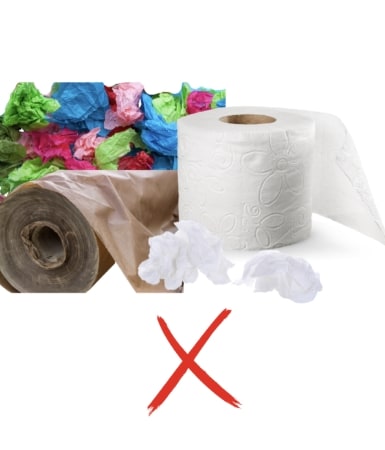
Cardboard
Recycled cardboard, like, like paper, can be recycled easily, and the demand for recycled cardboard is gaining popularity. Cardboard products you may recycle at home are:
- Packaging inserts and trays
- Toilet paper and paper towel tubes
- Boxes! Tissue, cereal, detergent, dry food, frozen food, shipping – all the boxes!
Except for contaminated ones. Pizza boxes are unable to be recycled at most facilities because of the oil contaminant but check with your local recycling plants. In New York, you can recycle a pizza box with just
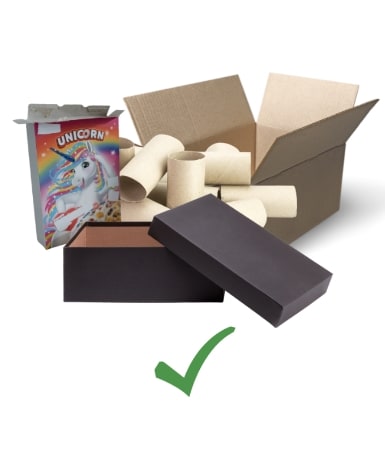
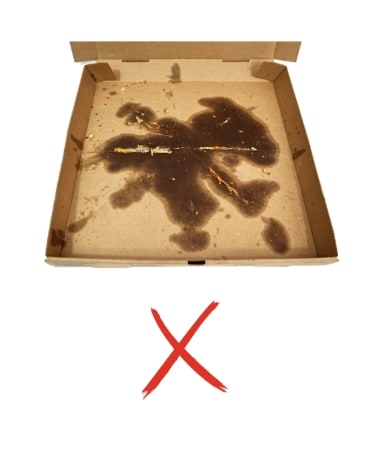
basic oil spots, as long as it is not soaked in oil and covered in cheese residue. Sometimes when pizza is on top of a wax paper liner, this can protect the box from grease and be removed to recycle the box! Remember to make sure you break down and flatten large boxes.
Metal
Metal recycling is very efficient because metals can be recycled repeatedly without the element's properties being degraded. Some areas even pay for scrap metal, which can be valuable! At home, you can recycle:
- Metal caps and lids
- Empty and cleaned cans – soup, pet food, soda, and juice
- Clean aluminum foil
Consult your local facilities about recycling empty pressurized aerosol containers or paint cans. Because of the flammable hazardous chemicals these previously contained, they may not be accepted at some centers. However, there are facilities around the country that do except completely emptied containers or do not offer home pickup of these materials and require you to bring them to special drop-off sites. Wire hangers are not accepted by all facilities either. Some will take them, but others suggest you bring metal hangers back to the dry cleaners or donate them to thrift stores.
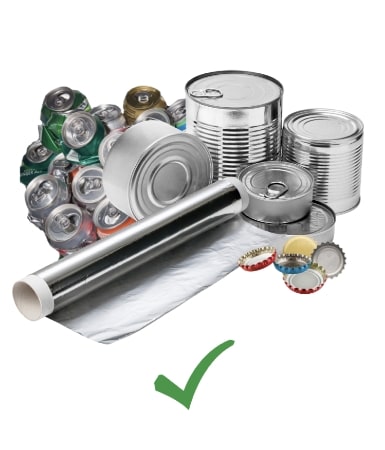
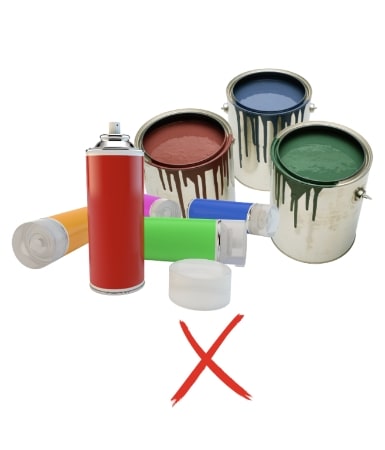
Glass
Like metal, glass can be recycled indefinitely. Glass is actually not biodegradable, contrary to popular belief. Organic processes do not break glass down, and though glass is susceptible to mechanical erosion by wind and water, it takes millions of years to break down in this way. Human facilitated breakdown (recycling!) is still imperative to regulate glass disposal. Recycle:
- Bottles – soda, wine, and beer
- Jars – pickled vegetables, spaghetti sauce, jam, or jelly
Remember to clean and wipe out, or at the very least rinse, glass containers to rid them of food or drink debris. Broken glass is generally not accepted at most facilities because household glass like mirrors, lightbulbs, eyeglasses, and even wine glasses are treated with different chemicals than food containers. Still, you can check with your local recycling facility.
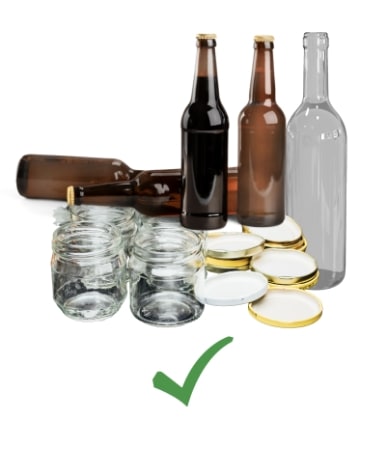
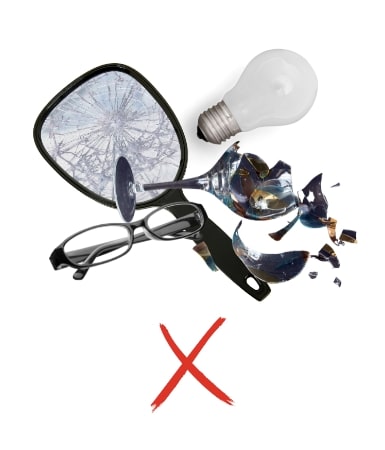
Plastic
Plastic is one of the least recycled products in America, with only about 8% of produced plastics actually being recycled. Additionally, plastic takes on so many different forms, which can make a streamlined recycling process virtually impossible. Plastics are treated with different chemicals and come in various thicknesses and shapes and need to be recycled differently. Plastic products always have a resin ID code – a small recycle triangle containing a number in the middle. These numbers range from 1-7 and identify what type of plastic the product is and are ordered from easiest to recycle (1) to the most difficult (7). As you’ll see soon, the presence of the triangle doesn’t necessarily mean that the product can, or will be, recycled.
Plastic #1 is polyethylene terephthalate (PET). This plastic is the easiest to recycle and is often transformed from various beverage bottles and other food containers into new bottles or polyester for fabrics and jacket and blanket fillings. Most, if not all, of your local recycling facilities will accept #1 plastics
Plastic #2 is high-density polyethylene (HDPE). This is also an easily recyclable plastic. HDPE plastics usually take the form of milk and water jugs, shampoo, body wash and conditioner containers, and other large plastic containers such as those for laundry and dish detergent or motor oil. The colored containers can be recycled into pipes, ropes, and toys, and clear containers can be recycled back into containers.
Plastic #3 is polyvinyl chloride. (PVC). PVC is hard to recycle because of all the additives needed to give it it’s desirable properties. PVC is found in many transparent products and in all things vinyl, such as the famous PVC pipe and vinyl flooring. PVC can also release extremely harmful components when broken down that can affect wildlife and humans alike.
Plastic # 4 is low-density polyethylene (LDPE). LDPE is usually not recycled. LDPE is used to make thin products like grocery bags, bread bags, and plastic wraps. These items can jam machinery at recycling facilities, and more often than not, there is not enough of an economical case for facilities to devote a program to recycle them. Most of the time, they will just be thrown away and, in some cases, can be considered a “contaminant,” rendering an entire recycling bin unrecyclable. Some stores have recycling programs for plastic bags if you bring them back and drop them off. Click here to search for a participating store near you.
Plastic #5 is polypropylene (PP). Polypropylene is used in various products, from food and beverage containers to outdoor carpets and disposable diapers. The differences in the type and grade of all these different products make it hard to produce a recycled product with consistent quality. PS is not often recycled.
Plastic #6 is polystyrene (PS). Polystyrene comes in 2 forms: Rigid and formed. Rigid polystyrene is a hard plastic that is used in things like “disposable” cutlery. Formed polystyrene is also known as Styrofoam and is a foam substance used in insulation and packaging. Polystyrene leaches chemical styrene, which can act as a neurotoxin. PS can be recycled, but it is very difficult, and facilities rarely find recycling PS economically viable. Click here to view facilities with the capacity to recycle PS in North America
Plastic #7 is “mixed” (OTHER). This means multiple resins are used in the manufacturing of these products. Mixed items include 5-gallon water bottles, liners in metal food cans, and electronics. These can be impossible to recycle, if not extremely difficult.
Learning that most plastic products are not actually recycled when you do your due diligence to throw them into the correct bin can be frustrating. Alternatives to recycling are reusing or refusing. Hard plastic products like laundry detergent bottles and rigid plastic cutlery are extremely durable. Utensils can be reused many, many times over and are safe to clean with soap and water. You can save bottles and refill them with other products or find an eco-friendly refill store near you, like Verde in Miami. Plastic bags can be used again after bringing home groceries, and you can try to reuse plastic water bottles as many times as possible to get more than just a single use out of them. When plastics aren’t recycled, we can try to reduce their demand of them. Instead of buying packs of plastic water bottles, invest in a reusable metal one. You’ll also be able to keep your water cold for longer! Carry a set of reusable utensils with you in your car or purse. Many products can also be bought in a glass alternative, which is more assuredly recycled. Plastic can be avoided when enough effort is put in, and most strategies don’t require drastic lifestyle changes.
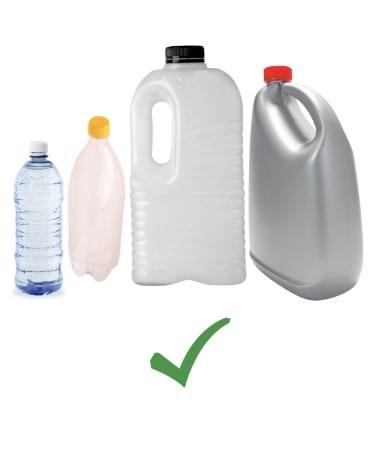
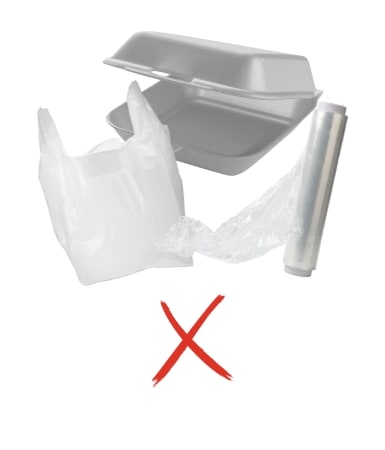
Oils
When was the last time you thought about recycling your oil? It might not be something we use often enough in our day-to-day lives, but there is still a significant amount of oil that is disposed of improperly in the United States every year. Pouring used oil down the drain or onto the ground can contaminate water supplies, and only 5 gallons of oil are needed to make 1 million gallons of water undrinkable. Cooking oil can be brought to most home chemical collection centers, and restaurants can schedule waste oil pickup for recycling. If you are someone who changes your car’s oil by yourself, you can take the used oil to any home chemical collection center or most auto parts stores. Stores such as AutoZone and Advance Auto welcome old oil and accept other hard-to-recycle materials like batteries.
Electronics
Many electronics are actually prohibited from being disposed of in the trash – so how are they supposed to be gotten rid of once they’ve reached the end of their life cycle? Many rechargeable items contain lithium-ion batteries in them because they are a significant fire hazard. Rather than taking them to a hazardous materials disposal plant, consider recycling them. Many manufacturers and retailers have available drop-off locations for your used or broken electronics. Stores like Best Buy have an electronic recycling program, and it’s as simple as stopping by and dropping off your items in less than 5 minutes.
Remember!
- Don’t be a “wish-cycler”! Clean food containers before recycling. Oil and food debris can even be cleaned with a little soap and water. Contaminants don’t get recycled and can cause the whole bin to be trashed instead of recycled.
- Check with your local recycling facilities to see which items they are sure to accept and which items you may need to consider bringing to another specialized facility.
- Don’t use plastic bags to contain your recyclables! The entire bin will be considered “contaminated” since most municipal recycling plants don’t have the capacity to recycle thin plastics.
- Keep the cap on. Nowadays, plastic bottle caps can be recycled along with the bottle, but recycling them separately can actually cause machine jamming since bottle caps are small loose items. Screw the bottle cap back onto its bottle before tossing it in the recycling bin.
More Resources:
We hope you found this article helpful for your everyday recycling. For more in-depth information and specific recycling locators, visit any of the sites below!
Earth 911
Consumer Technology Association’s Greener Gadgets
Call 2 Recycle
References:
13, R. C. |M., Cho, R., Piazza, J., Villegas, V., Gordon, D., B, E., kuemin, J., Anonymous, L, P., Doe, J., Barry, U, L., Thaler, J., Fecht, S., S, D., Forest, D., Bill, Smith, A. R., M, L., … Singh, B. (2022, September 21). Recycling in the U.S. is broken. how do we fix it? State of the Planet. Retrieved October 3, 2022, from https://news.climate.columbia.edu/2020/03/13/fix-recycling-america/
Barnard, A. (2022, March 3). Can you recycle a greasy pizza box? The New York Times. Retrieved October 3, 2022, from https://www.nytimes.com/interactive/2022/03/03/nyregion/ny-recycling-rules.html
Car seat trade-in: Target. Target Corporate. (2019, May 1). Retrieved October 3, 2022, from https://corporate.target.com/sustainability-esg/environment/waste-and-circular-economy/car-seat-trade-in
Environmental Protection Agency. (n.d.). Electronics Donation and Recycling. EPA. Retrieved October 3, 2022, from https://www.epa.gov/recycle/electronics-donation-and-recycling#why
Environmental Protection Agency. (n.d.). Managing, Reusing, and Recycling Used Oil. EPA. Retrieved October 3, 2022, from https://www.epa.gov/recycle/managing-reusing-and-recycling-used-oil
Environmental Protection Agency. (n.d.). Used Lithium-Ion Batteries. EPA. Retrieved October 3, 2022, from https://www.epa.gov/recycle/used-lithium-ion-batteries
EPA. (n.d.). Frequent Questions on Recycling. EPA. Retrieved October 3, 2022, from https://www.epa.gov/recycle/frequent-questions-recycling
EPA. (n.d.). What you should know about microfiber pollution - US EPA. Environmental Protection Agency. Retrieved October 3, 2022, from https://www.epa.gov/sites/default/files/2020-07/documents/article_2_microfibers.pdf
Geographic , N. (2008). Smart Plastics Guide - PBS. Public Broadcasting Service . Retrieved October 3, 2022, from https://www-tc.pbs.org/strangedays/pdf/StrangeDaysSmartPlasticsGuide.pdf
greenorb. (2021, April 10). Is glass biodegradable? Thinking Sustainably. Retrieved October 3, 2022, from https://www.thinkingsustainably.com/is-glass-biodegradable/
Helmenstine, A. (2021, May 2). What is a thermosetting plastic? definition and examples. Science Notes and Projects. Retrieved October 3, 2022, from https://sciencenotes.org/what-is-a-thermosetting-plastic-definition-and-examples/
How to recycle cooking oil. Earth911. (2021, March 13). Retrieved October 3, 2022, from https://earth911.com/recycling-guide/how-to-recycle-cooking-oil/
Inside Target's journey to reduce the impact of plastics. Target Corporate. (n.d.). Retrieved October 3, 2022, from https://corporate.target.com/article/2019/06/plastics
Is broken glass recyclable? Recycle Coach. (2021, August 4). Retrieved October 3, 2022, from https://recyclecoach.com/blog/is-broken-glass-recyclable/
Leasca, S. (2019, March 5). The big recycling mistake you make with plastic bottle caps. Real Simple. Retrieved October 3, 2022, from https://www.realsimple.com/home-organizing/green-living/plastic-bottle-caps-recylable
LeBlanc, R. (2021, March 5). Get an introduction to metal recycling. LiveAbout. Retrieved October 3, 2022, from https://www.liveabout.com/an-introduction-to-metal-recycling-4057469
Magazine, S. (2022, May 9). At least 85 percent of U.S. plastic waste went to landfills in 2021. Smithsonian.com. Retrieved October 3, 2022, from https://www.smithsonianmag.com/smart-news/the-us-recycled-just-5-percent-of-its-plastic-in-2021-180980052/#:~:text=Of%20the%2040%20million%20tons,and%20The%20Last%20Beach%20Cleanup.
Recycling. Recycling. (n.d.). Retrieved October 3, 2022, from https://www.lacitysan.org/san/faces/home/portal/s-lsh-wwd/s-lsh-wwd-s/s-lsh-wwd-s-r?_adf.ctrl-state=ahdtrvzn4_1&_afrLoop=16480654301942811&_afrWindowMode=0&_afrWindowId=null#!%40%40%3F_afrWindowId%3Dnull%26_afrLoop%3D16480654301942811%26_afrWindowMode%3D0%26_adf.ctrl-state%3Dahdtrvzn4_5
Recycling collection. Recycling Collection. (n.d.). Retrieved October 3, 2022, from https://dpw.dc.gov/service/recycling-collection
Sedaghat, L. (2018, April 13). 7 things you didn't know about plastic (and recycling). National Geographic Society Newsroom. Retrieved October 3, 2022, from https://blog.nationalgeographic.org/2018/04/04/7-things-you-didnt-know-about-plastic-and-recycling/
Solid waste management. Department of Solid Waste Management. (n.d.). Retrieved October 3, 2022, from https://www.miamidade.gov/global/solidwaste/home.page
The Truth About Recycling. DEN Soils. (n.d.). Retrieved October 3, 2022, from https://densoils.com/blogs/news/the-truth-about-recycling
Thermoset vs. thermoplastics. Modor Plastics. (2017, March 22). Retrieved October 3, 2022, from https://www.modorplastics.com/plastics-learning-center/thermoset-vs-thermoplastics/
Used Oil Recycling. Florida Department of Environmental Protection. (n.d.). Retrieved October 3, 2022, from https://floridadep.gov/waste/permitting-compliance-assistance/content/used-oil-recycling#:~:text=Public%20Used%20Oil%20Collection%20Centers%20(PUOCC)%20%2D%20Voluntary&text=Recycling%20and%20properly%20disposing%20of,used%20oil%20free%20of%20charge.
What to Recycle for Residents and Apartment Managers. DSNY - the city of New York Department of Sanitation. (n.d.). Retrieved October 3, 2022, from https://www1.nyc.gov/assets/dsny/site/services/recycling/what-to-recycle
Image Sources:
Allexxandar. (2020, December 24). V, plastic recycling symbol PVC, V 3 stock photo - image of Polyvinyl, code: 205645960. Dreamstime. Retrieved October 3, 2022, from https://www.dreamstime.com/v-plastic-recycling-symbol-pvc-v-v-plastic-recycling-symbol-pvc-v-red-background-image205645960
Andrade, P. (2022, January 28). What do recycling symbols mean? - blog. Recyclops. Retrieved October 3, 2022, from https://recyclops.com/what-do-recycling-symbols-mean/
Everyday Recycler. (2022, April 21). Plastic numbers – no 2 - HDPE – high-density polyethylene. Everyday Recycler. Retrieved October 3, 2022, from https://everydayrecycler.com/plastic-number-2-hdpe/
Foam plastic #6 (polystyrene). Recycle Right NY. (2022, March 31). Retrieved October 3, 2022, from https://recyclerightny.recyclist.co/guide/foam-plastic-6-polystyrene/?embeddedguide=true
Gomollón-Bel, F. (2020, May 29). Polyethylene terephthalate. Chemistry World. Retrieved October 3, 2022, from https://www.chemistryworld.com/podcasts/polyethylene-terephthalate/1017555.article
Hunt, K. (2020, January 17). What do the numbers on recyclable plastics mean? Green Matters. Retrieved October 3, 2022, from https://www.greenmatters.com/renewables/2018/09/13/ZG59GA/plastic-recycling-numbers-resin-codes
LDPE Polyethylene Plastic film. Brentwood Plastics. (n.d.). Retrieved October 3, 2022, from https://brentwoodplastics.com/ldpefilm
McCartney, I. (2020, December 17). Advantages and disadvantages of polypropylene. Kempner. Retrieved October 3, 2022, from https://kempner.co.uk/2019/04/16/advantages-and-disadvantages-of-polypropylene-blog/
Nick. (2020, September 30). What plastics can and cannot be recycled? SL Recycling. Retrieved October 3, 2022, from https://www.slrecyclingltd.co.uk/what-plastics-can-and-cannot-be-recycled/
Performance modifier additives make standard polypropylene resins perform like premium grades. Plastics Technology. (n.d.). Retrieved October 3, 2022, from https://www.ptonline.com/articles/game-changing-polypropylene-additives-improve-impact-resistance-and-processing-costs-
Plastic #7 (other). South San Francisco Scavenger Recycling Guide. (2022, June 29). Retrieved October 3, 2022, from https://ssfs.recyclist.co/guide/7-plastic-miscellaneous/?embeddedguide=true
PVC plastic and its applications, meaning, manufacturing - TOPPR-guides. toppr. (n.d.). Retrieved October 3, 2022, from https://www.toppr.com/guides/physics/atomic-and-molecular-structure/pvc-plastic-and-its-applications/
Republic Services. (n.d.). Retrieved October 3, 2022, from https://www.republicservices.com/blog/7-tips-and-tricks-to-simplify-recycling
Ryan, S. (2022, January 29). Which plastic recycling codes can (or cannot) be recycled? here's your quick list. Greenopedia. Retrieved October 3, 2022, from https://greenopedia.com/plastic-recycling-codes/
Trevor, Trevor, 31, R. on M., 31, trevor on M., 30, K. on M., 31, D. M. on M., 1, trevor on A., 1, D. M. on A., 14, M. on M., 1, michael F. on A., 1, 11 B. on A., 2, B. on A., 4, trevor on A., 9, hentz on A., 23, A. on N., 26, C. on M., 15, J. on J., 21, B. on N., 11, prakyath on D., … 13, kingscairn on S. (2014, March 14). Food Grade & Food Safe Buckets. Five Gallon Ideas. Retrieved October 3, 2022, from http://fivegallonideas.com/food-grade-buckets/
What do the recycling numbers mean? - rlmrecycling. Google Sites: Sign-in. (n.d.). Retrieved October 3, 2022, from https://sites.google.com/site/rlmrecycling/home/what-do-the-recycling-numbers-mean
What does the recycling symbol mean, anyway? San Jose Recycles. (2021, February 9). Retrieved October 3, 2022, from https://sanjoserecycles.org/what-does-the-recycling-symbol-mean/

